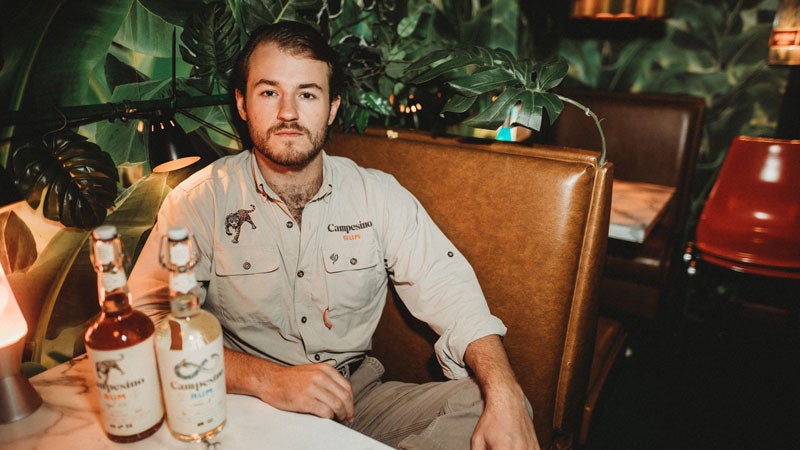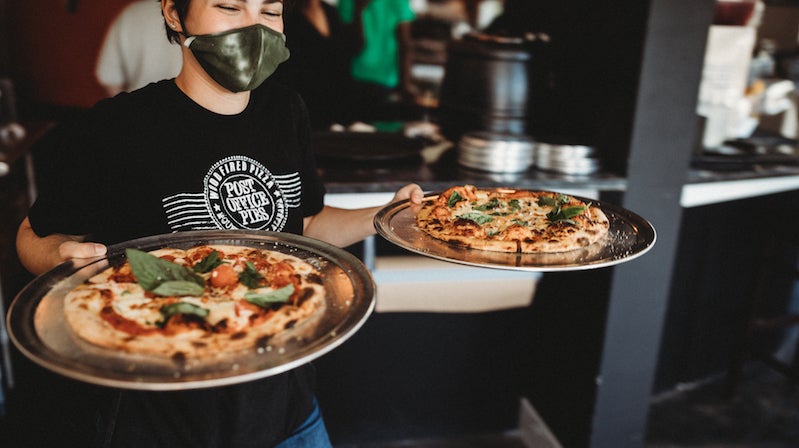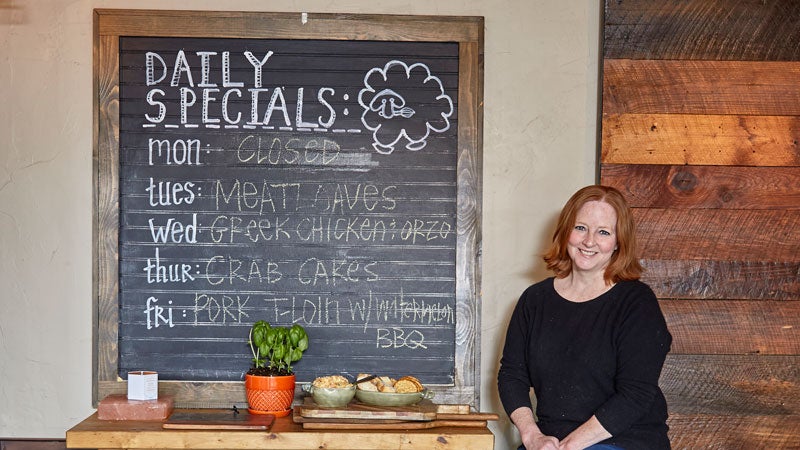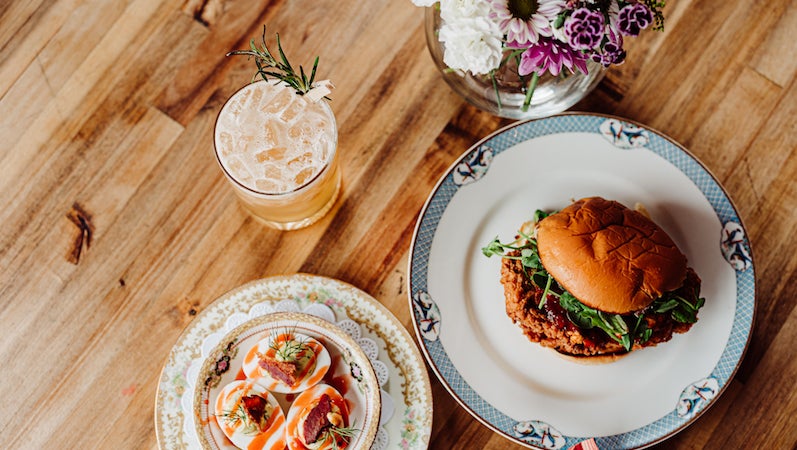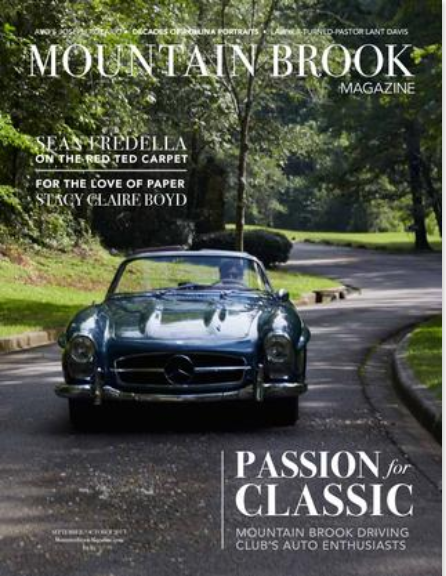In Latin American culture, a campesino has a cowboy sort of lifestyle, living off of the land in the backwoods of countries like Panama—further back than even a jungle-ravenous Hatton Smith II would venture. They don’t abide by modern rules. They don’t even know them, Hatton will tell you.
And Hatton would know since campesinos became his friends during his time living on a sustainable farm in Panama. They’d bring coconuts into the still where Hatton was distilling rum and trade them for rum. Together they would drink the fruit of Hatton’s labor and help him with his Spanish.
Campesinos are also known for taking nothing and making it into something—a craft Hatton knows about himself, as his adult life has evidenced. In fact, his story resembles the namesakes of his rum company in more ways than one.
Growing up in the Royal Cup Coffee family with his dad Hatton I serving as CEO, Hatton II, a 2012 Mountain Brook High School graduate, would travel with his family to visit coffee farms, meeting farmers and learning production styles in Latin America and other coffee-producing regions. By age 16, he knew how beans were roasted and was drinking coffee daily.
After college, he found himself in a different part of the beverage business as green commodities trader in New York, buying coffee from all over the world to sell to companies like Dunkin Donuts, Keurig, JAB, Starbucks and Royal Cup itself. But after taking a new job that didn’t last long with a startup in California to help create an innovative coffee-marijuana crossover product, he found himself wondering what was next. He didn’t know where he’d work or even go, but he knew he could always go back to the tropics.
The summer after his freshman year of college, Hatton had been a hiking guide in Panama and led biologists and photographers into the jungle on routes he came to know well. For him there was nothing quite like getting deep in the woods and blazing trails. So at age 23 he dropped off his car at a Royal Cup warehouse in Los Angeles, flew to Panama and got on a bus to a small one-horse, dirt-road town and a nearby sustainable farm where he’d spent time on several trips.
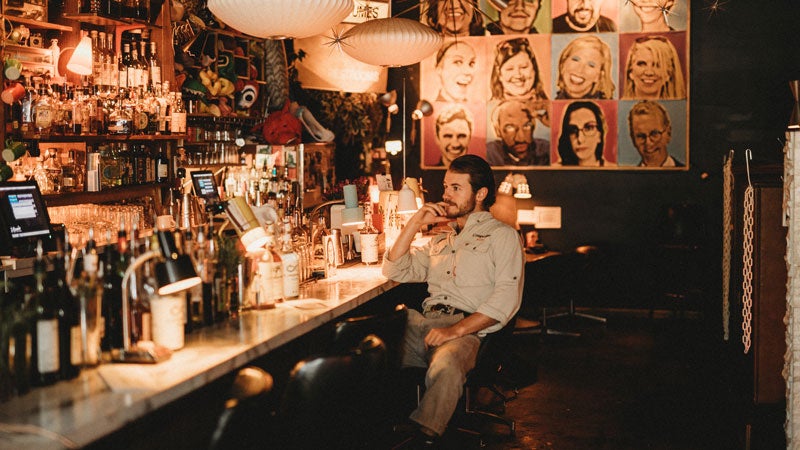 Hatton knew he could live off the land there, but he wanted a way to make money too. So he turned to what he had always known—coffee. Since he was familiar with the coffee-growing regions in the country already, he travelled to them and bought a 132-pound bag of beans for $230. Back at the farm, he poked holes in an oil drum and filled it with jungle wood, dipped a 4-foot kettle in and started roasting beans over the open fire. Soon he was selling bags of roasted beans for $10 a piece to local international students and a makeshift coffee shop of sorts. That was his first business.
Hatton knew he could live off the land there, but he wanted a way to make money too. So he turned to what he had always known—coffee. Since he was familiar with the coffee-growing regions in the country already, he travelled to them and bought a 132-pound bag of beans for $230. Back at the farm, he poked holes in an oil drum and filled it with jungle wood, dipped a 4-foot kettle in and started roasting beans over the open fire. Soon he was selling bags of roasted beans for $10 a piece to local international students and a makeshift coffee shop of sorts. That was his first business.
Then when a 125-gallon rum still was donated to the farm, he got it installed on a mountainside and moved his hammock up there to sleep. Because he knew coffee, he knew rum too. Just as sugar and coffee farming are intertwined, so are coffee and rum production since rum is distilled from sugar cane found in the same regions as coffee beans. It had always been Hatton’s favorite spirit too, so he jumped at the opportunity to distill it himself. He’d buy 300 gallons of raw molasses for $100 and get sugar cane from the farm at no cost, add some water and yeast, and the end product was rum.
Ask Hatton how all of that worked, and you’ll get a chemistry lesson of how yeast eats sugars that in turn shapes the flavor of the rum. Each batch Hatton distilled was different, but the key was his “secret sauce.” Instead of using water, he started with a liquid called dunder that is ripe with microbes, potassium and carbon elements as a byproduct from distilling previous rum batches. The biggest key to his rum, and any rum for that matter, though is the terroir of the area—the dirt the sugar cane is grown in, the air, the wind, the rain, and how the heat of the tropics fosters chemical reactions in a barrel that create true flavor.
Along the way Hatton learned that his own previous conception of rum was not quite right. He’d always thought rum was naturally sweet with caramel and vanilla flavors, but as it turns out many rum producers add sugar, flavor and color to create the taste he had always assumed was authentic—their dirty little secret.
With authenticity though, Hatton says, “You’ll taste stuff that isn’t necessarily connected to sweetness. It has characteristics of oak, the rawness of honeycomb and the zest of an orange, and other flavors you can’t describe that come from the interaction with molecules in the oak in a charred barrel. Sometimes it’s cardamom, sometimes it’s cinnamon. It drinks more like bourbon.”
Eventually Hatton was running the still every other day, producing about 30 bottles a day he’d sell for $20 each. There wasn’t anything to spend cash on in the jungle, so it piled up in shoeboxes and he later started acting as a sort of ATM for students who would trade him for a Venmo payment at an internet café with a surcharge—his fourth business, before he started R&D for biofuel that would never get off the ground before he left.
As the rum business boomed, Hatton was also spending time surfing, sailing and travelling around the Caribbean islands—not a bad way to live. But “my ambition got the better of me,” he says. “I am super competitive, I like to play and I like to win.” And that’s what brought him back to Birmingham in the fall of 2018 with a vision for a business he could scale.
A year later, Campesino Rum—a brand that serves as an homage to his friends in Panama always marked with a sketch of the elusive jungle jaguar—now creates custom blends from the world’s best rum distilleries. The process all goes back to inspiration from the coffee industry, where it’s standard to blend coffee beans from Brazil, Indonesia, Vietnam and other coffee-growing areas to create a blend that becomes a consistent product over time—a process Hatton says is all he’s ever known. Campesino officially launched in early August, and by the time we interviewed Hatton at the first of September you could find his rum blends in ABC stores across the state and in bars in Huntsville, Tuscaloosa, Auburn, Mobile and Birmingham.
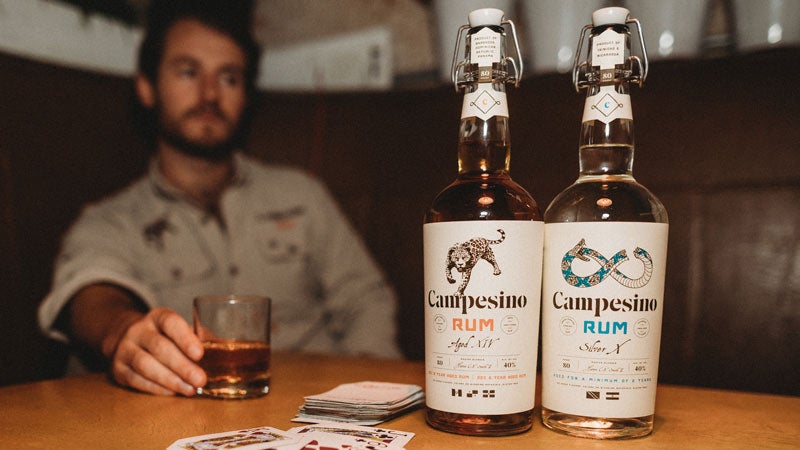 To start with, there are two varieties of Campesino to choose from. The Aged XVI comes with notes of vanilla, oak, honey, caramel and brown sugar. Hatton recommends drinking it on the rocks or in his go-to, a Rum Old-Fashioned with chocolate and orange bitters and Royal Cup cold brew coffee. The Silver X blend is cleaner and more floral, designed to be mixed and to take a vodka drinker outside their comfort zone. Hatton suggests drinking it simply with soda and a lime, or in a daiquiri or mojito, or mixed in sweet tea, lemonade, Sprite, Ginger Ale or Coca-Cola.
To start with, there are two varieties of Campesino to choose from. The Aged XVI comes with notes of vanilla, oak, honey, caramel and brown sugar. Hatton recommends drinking it on the rocks or in his go-to, a Rum Old-Fashioned with chocolate and orange bitters and Royal Cup cold brew coffee. The Silver X blend is cleaner and more floral, designed to be mixed and to take a vodka drinker outside their comfort zone. Hatton suggests drinking it simply with soda and a lime, or in a daiquiri or mojito, or mixed in sweet tea, lemonade, Sprite, Ginger Ale or Coca-Cola.
To bring these blends to a bar near you, Campesino operates like a tech company with no office or facility, but there was no question that Hatton’s home base would be his hometown. “Birmingham is the best place in the world to start a company right now in my opinion,” he says. “We have resources, but also the people who want to see you succeed are incredible.” For him that’s been people like Josh Schaff at The Collins Bar and Cayo Coco, Feizal Valli and Rachael Roberts at The Atomic, Jason Koenig and Ryan Abrams at Paper Doll, Laura Newman from Queen’s Park, Mike Capri from Lou’s Pub, LeNell Santa Camacho of LeNell’s, and Major Colbert from R&R in Crestline Village.
Those folks have all given him a leg up he likens to the experience of his grandfather Philip C. Jackson, who was on the Federal Reserve Board. “My grandfather said he started on third base when everyone else started on home plate, and all he had to do was run home. If that was true for him, I feel like I might already have a run on the board,” he says.
The rums that make up Campesino blends are all produced and aged at origin in rum-producing countries like Panama, Nicaragua, Barbados, Trinidad and Dominican Republic, with more than 60 percent of the flavor coming from the aging process according to Hatton. From there these rums are shipped to Amsterdam for blending according to a formula Hatton developed, and then the blended rum goes back across the Atlantic to Louisville, Kentucky, for bottling before it makes it to liquor stores and bars in Alabama and beyond.
“What’s next?” we ask Hatton. “Tennessee, Georgia, Florida, Texas,” he rattles off without taking a breath, “California, New York, London, Germany, India.” He says he’ll focus on the Southeastern market first, but with a speaking engagement at International Drinks Expo in London scheduled for November, it might not be long before you can order Campesino in Europe, especially since rum blends are more common in Europe than the U.S. Whiskey might be in the limelight in the States now, but he sees that changing in his favor. “Rum has yet to have its day, but Campesino is in a position to take advantage of it,” he says.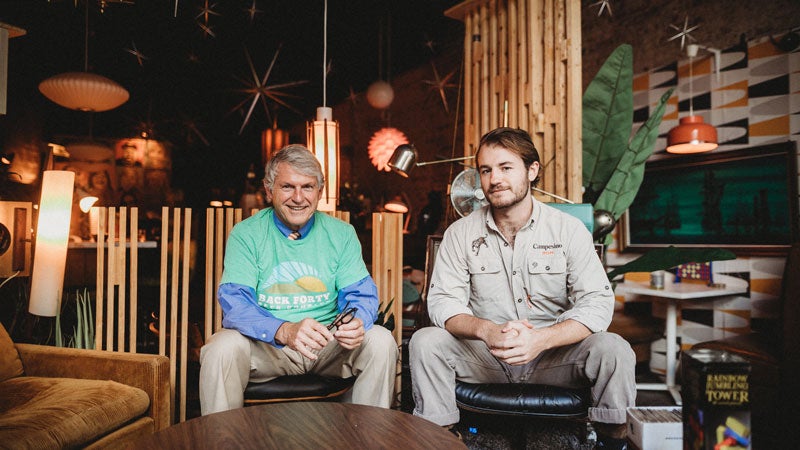
Back Forty Family Ties
Hatton Smith II isn’t the only one in the family venturing outside of coffee. For his dad Hatton Smith I, what started as an investment in Gadsden-based Back Forty Beer Company has turned into a part-time CEO position for the beer company in addition to his work running the UAB Football Foundation and still working part time for Royal Cup Coffee, where he previously served as CEO.
As he works to get Back Forty in more markets, Hatton has found some overlap in selling beer to longtime Royal Cup customers like country clubs and the Elyton Hotel, but calling on grocery store chains like Publix, Winn-Dixie and Kroger has been as new to him as learning to market directly to the consumer and not just business owners as he’d long done with Royal Cup.
Locally you can order Back Forty at their taproom by Sloss Furnaces as well as at Woolworth, The Atomic, Paper Doll and Carrigan’s and you can buy six packs at Piggly Wiggly, Publix and Winn-Dixie. Choose any variety you like, but Hatton recommends the Truck Stop Honey, Bamamosa, Naked Pig, Cart Barn—and says to watch for a new peanut butter porter coming out soon and the seasonal Trade Day made with an ingredient Hatton knows well: coffee.

